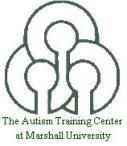Success Stories
 Positive Behavior Support has been very successful in helping teachers, parents, and caregivers deal with problem behavior. Below are a few success stories that highlight the impact that Positive Behavior Support can have when properly implemented. The names in the stories have been changed to protect the privacy of the individuals involved.
Positive Behavior Support has been very successful in helping teachers, parents, and caregivers deal with problem behavior. Below are a few success stories that highlight the impact that Positive Behavior Support can have when properly implemented. The names in the stories have been changed to protect the privacy of the individuals involved.
Tom’s Team
"Tom" is a 45 year old male who has been in several placements, all unsuccessful, due to "Tom’s" cognitive disabilities, an abusive environment and a lack of training. "Tom´s" team had tried several other behavor modification techniques, but like his placements, all without success because no replacement behaviors were taught. After "Tom’s" team was introduced to Positive Behavior Supports, a functional behavior analysis was conducted as well as a reinforcement inventory. For the past 6 months he and his team, have been following a positive behavior support plan. Historically, it was believed "Tom" "was not capable" of certain behaviors. Talk about the self-fulfilling prophesy! "Tom" is now learning replacement skills, cooking what he likes to eat and gardening, which enable him to better meet his needs and desires. His staff has learned to be positive, proactive and reinforce his new skills by using Positive Behavior Supports decided upon by the team. "Tom" is now working in a meaningful job and is currently doing well with little to no maladaptive behaviors reported. Kudos to Tom and his Positive Behavior Support team! PBS can change the way a team gives support, and in turn, rebuild a life.
Jerry’s Road to Success
"Jerry" is a 30 year old male with severe mental retardation, cerebral palsy, and seizure disorder who has lived in a group home. "Jerry’s" team has attempted other behavior techniques and interventions which were unsuccessful due to lack of overall change in environment and consistency. "Jerry" posed danger to self and others when exhibiting maladaptive behavior to the point of restraint. Physical aggression was the main focus of "Jerry’s" maladaptive behavior. This very severe maladaptive behavior occurred 3-4 times a month. Hypothetical functions of physical aggression included escape and expressing anger when he does not get his way. "Jerry" had injured many staff and uncertainty existed about the direction the agency would travel from that point. After being introduced to Positive Behavior Support, a functional assessment was completed with by the Qualified Mental Retardation Professional (QMRP). Recommendations included schedule changes, revamping prompts, and environmental changes. Replacements behaviors included asking for a break and breathing/self calming exercises. Tasks were split up into smaller periods of time with more choices. Small reinforcers were provided for exhibiting appropriate behavior (token economy) as well as natural reinforcement from being calm. "Jerry’s" target behaviors decreased and self calming increased. Restraints were no longer needed. The above interventions were successful because of strong team unity, cohesiveness, and determination to help "Jerry" improve his life. "Jerry" is now participating more in day programs and has no need to communicate by exhibiting maladaptive behaviors.
Janet Adapts to New Caregiver
"Janet" had to move in 2003 when the caregiver she had lived with for years developed heart trouble. Although "Janet" is moderately mentally impaired, she had run the show with her previous provider so she became belligerent when her new caregiver insisted that she follow rules. These included doing household chores such as dusting her room, changing her sheets, and doing her own laundry. "Janet" was also expected to eat on a schedule with the family and go to bed at a reasonable time. "Janet" expressed her resentment of these limitations by waking up cursing and screaming. She would also soil the caregiver’s new carpet when she was angry. "Janet’s" caregiver was ready to send her elsewhere when a Positive Behavior Support Specialist was asked to provide assistance. This specialist worked with "Janet’s" team to develop a PBS plan that included a token economy. "Janet" earned a token whenever she greeted her caregiver in the morning without cursing. She also earned tokens for other things like completing a task with only verbal prompts and no physical assistance. The team was really successful in identifying highly reinforcing items or activities for which "Janet" could trade in her tokens. These included rewards which gave "Janet" a feeling of control like getting to cook with her caregiver or getting to choose what to have for dinner or getting to watch her caregiver do a chore for her. "Janet" quickly learned to select these rewards from a picture chart, and she was soon earning ten or more tokens a day. This frequent reinforcement gave "Janet" a new attitude about her caregiver. Within two weeks "Janet" stopped soiling the carpet, and she and her caregiver gradually developed a strong bond as they learned to interact together. When a day habilitation caregiver was hired, "Janet" even participated in training this staff on the token economy. Two years later when "Janet" changed service coordination agencies, her caregiver still wanted to keep the token economy with some changes because it had worked so well. "Janet" remains with this same caregiver three years later.



